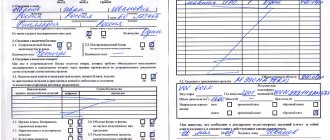Tourists want to bring various delicacies back from their trip to their relatives and friends. This applies not only to sweets, but also to some expensive food products. For example, caviar. How much caviar can you carry on a plane? There are certain restrictions on the transportation of such products in all states. They must be respected.
Prohibited and available products for transportation on an airplane
Passengers are often tormented by doubts not only about whether caviar can be taken in hand luggage on a plane, but also other products. It can sometimes be quite difficult to understand all the nuances on your own.
To avoid any problems when checking your luggage, you need to check with the airline in advance which products you can take with you and which you cannot. Almost all companies have their own rules and regulations regarding quantities. Although there are general rules that many carriers often adhere to.
Please note that there are not only airline rules, but also customs rules, but they do not apply to flights within Russia. Only if you are flying to another state.
If you are interested in what foods can be taken in hand luggage, you need to understand that food products must be suitable in weight and volume for a hand bag.
It is worth understanding that many countries establish their own customs rules regarding food products. For example, under no circumstances should you transport meat (both raw and prepared), as well as dairy products, to European countries. Such rules have been introduced in order to avoid infections that are often transmitted through these products.
What will you get by contacting a customs broker "Consult Group"
- Accurate calculation of all upcoming payments, taxes, fees and risks, which makes it possible to plan markups on goods;
- Consolidated warehouse for temporary storage and reloading of goods;
- Assistance in obtaining the necessary permits necessary to standardize your product in accordance with the legislation of the Customs Union;
- Assignment of one of our specialists who will delve into the specifics of your delivery;
- The shortest possible time for customs clearance procedures.
- Documents with information, thanks to which you will receive 0% VAT, according to Art. 164 of the Tax Code of the Russian Federation.
By contacting us, you reduce to zero the chances of encountering unexpected expenses at the border.
Is it possible to carry caviar on an airplane?
The transportation of these products is not prohibited by any state. The main thing is to comply with the established import/export standards. They are regulated by customs authorities.
Caviar can be transported in two ways:
- in hand luggage directly in the cabin;
- in luggage as registered cargo (filling out a declaration is required).
Air carriers have not established restrictions on the transportation of these products. But this does not mean that you can take it with you in unlimited quantities.
Important! When transporting canned food in luggage, it is necessary to comply with the customs regulations for import and export established by states.
As for transporting caviar in hand luggage, there are certain restrictions in this case. This product, like all canned food, belongs to the category of “liquid products”. And they can be transported in no more than 10 0.1 liter jars.
According to the law, fish products are packaged in containers that indicate not the volume in ml, but the weight in grams. Therefore, formally, security officials may prohibit transporting the product in hand luggage. It may be confiscated during inspection. It is better to opt for transporting these products in checked baggage.
Is it possible to carry caviar (red and black) in hand luggage?
Let's try to figure this issue out. As we noted above, you can carry caviar on an airplane. At the same time, you need to know how much of this product you can take on board, and how exactly to carry it - take it in hand luggage or check it in as checked luggage. In both the first and second cases, strict rules are established.
Since caviar is a liquid product, you can take it in a certain amount in your hand luggage on a plane. In particular, one air passenger is allowed to carry no more than a dozen 100-ml containers of such goods.
However, there are also a few other important points to consider. In particular, on factory cans it is not the volume that is indicated, but the weight (in grams). This may become a formal reason for a ban on transporting caviar in hand luggage on an airplane.
If we talk about luggage, then airlines do not set any limits. However, this does not mean that you can transport caviar in unlimited quantities. After all, here it is still necessary to take into account customs rules that establish certain restrictions both on the export of goods from the country and on their import.
Caviar in luggage
To avoid possible questions from the security service during inspection, as well as the seizure of valuable goods, it is better to securely pack the container with caviar and place it in your checked baggage.
The container can be anything - a tin or glass jar, or a plastic jar. To reduce the risks of possible leaks and damage, it is better to pack the container in a thick bag and place it among soft items in your suitcase.
It is best to carry red and black caviar in airplane luggage in a thermal bag or thermal package, especially if you are making a long flight to a country with a hot climate. This will help maintain an acceptable storage temperature for several hours.
Requirements for the contents and packaging of shipments
Papers, printed publications, small items weighing up to 3 kg can be packed in an envelope, plastic bag or thick paper, tying or sealing the wrapper.
Heavy and large items should be sent in a box, bag or lined with thick fabric.
Envelopes, boxes and other packaging materials can be purchased at post offices. For EMS shipments, EMS envelopes and plastic bags up to 60 × 70 cm in size are provided free of charge.
Items with an inventory of the contents should not be pre-packaged - they must be handed over to a Post Office employee to check the contents with the inventory and only then packaged.
Item sizes
The maximum size of parcels in Russia is 190 × 130 × 350 cm, maximum weight is 20 kg.
The maximum size of parcels abroad: the sum of three dimensions - 300 cm, length - 150 cm, weight - 30 kg.
Parcels heavier than 20 kg or larger than 300 cm in the sum of three dimensions can only be sent to specially equipped post offices.
Package size
The maximum size of the mailbox is 42.5 × 26.5 × 38 cm.
For larger parcels, some branches sell special bags; If you were unable to buy it, you can pack the parcel yourself.
Packaging requirements
- The packaging must be durable, prevent access to the contents of the parcel, and there must be space for sticking an address label measuring at least 10.5 × 14.8 cm.
- There should be no tape or traces of it on the cardboard packaging. You cannot reuse Russian Post boxes to send parcels.
- If you stick the form onto the shipment yourself, remember that the tape or packaging film should not cover the barcode.
- The contents of the parcel should not move inside the package - for this, the free space in the box is filled with polystyrene, sawdust, shavings, and cotton wool.
- Fragile items are shipped in rigid packaging only.
- Liquids and fluid substances are sent in sealed containers, enclosed in postal packaging marked “Caution” (such parcels cost 30% more). Dyes are sent in sealed metal containers; they cannot be sent in plastic or fabric packaging.
- Fabric packaging must consist of one piece or several homogeneous pieces of light-colored fabric, sewn with an internal seam. The address is written on the fabric packaging, not sewn on. Before packing in fabric, the parcel should be protected from getting wet using plastic film or other waterproof material.
- Seedlings, fresh and non-perishable vegetables and fruits must be sent in packaging with holes for ventilation. When sending vegetables and fruits, the package must be marked “Vegetables”. In this case, only non-perishable vegetables and fruits can be sent.
- Parcels containing bees must be packed in a special net.
- Without additional packaging, you can send goods in original packaging, as well as solid, unbreakable items without sharp protrusions.
In Russian federation
- firearms, signal weapons, pneumatic weapons, gas weapons, ammunition, cold weapons (including throwing weapons), electric shock devices and spark gaps, as well as main parts of firearms;
- narcotic drugs, psychotropic, potent, radioactive, explosive, caustic, flammable and other dangerous substances;
- poisonous animals and plants;
- Russian banknotes and foreign currency;
- perishable food, drinks;
- items that, by their nature or packaging, may pose a danger to postal workers, stain or damage other postal items and postal equipment.
When imported into the territory of the Russian Federation
- Printed and audiovisual materials: containing calls for extremist and terrorist activities or public justification of terrorism; pornographic in nature; manufactured or distributed in violation of the requirements of the legislation of the countries of the customs union of the Eurasian Economic Community on elections and referendums; aimed at promoting Nazi paraphernalia or symbols or paraphernalia or symbols that are confusingly similar to Nazi paraphernalia or symbols; containing other information that may harm the political or economic interests of the Russian Federation, its state security, health and morality of citizens;
- any types of weapons (their parts), cartridges for them (their parts), products structurally similar to civilian and service weapons;
- hazardous waste;
- special technical means designed to secretly obtain information;
- toxic substances that are not precursors to narcotic drugs and psychotropic substances;
- narcotic drugs, psychotropic substances and their precursors, including in the form of medicines;
- human organs and (or) tissues, blood and its components;
- plants in any form and condition, plant seeds;
- live animals, with the exception of bees, leeches, silkworms;
- ozone depleting substances;
- plant protection products covered by Annexes A and B of the Stockholm Convention on Persistent Organic Pollutants of 22 May 2001;
- tools for extraction (catch) of aquatic biological resources:
- finished knotted fishing nets, produced machine- or manually from synthetic nylon or other polyamide monofilaments with a thread diameter of less than 0.5 mm and a mesh size of less than 100 mm (the size of the constructive mesh pitch is less than 50 mm);
- finished knotted fishing nets, produced by machine or manually from other synthetic monofilaments with a thread diameter of less than 0.5 mm and a mesh size of less than 100 mm (the size of the constructive mesh pitch is less than 50 mm);
- electrofishing systems and devices consisting of electrical signal generators, with connected conductors and an accumulator (battery), jointly performing the function of extracting (catching) aquatic biological resources through electric current);
- alcoholic products, ethyl alcohol, beer;
- any types of tobacco products and smoking mixtures;
- radioactive materials;
- cultural values;
- goods subject to rapid deterioration;
- precious stones in any form and condition, natural diamonds, with the exception of jewelry.
When exported from the territory of the Russian Federation
- Printed and audiovisual materials: pornographic in nature; manufactured or distributed in violation of the requirements of the legislation of the countries of the customs union of the Eurasian Economic Community on elections and referendums; aimed at promoting Nazi paraphernalia or symbols or paraphernalia or symbols that are confusingly similar to Nazi paraphernalia or symbols; containing other information that may harm the political or economic interests of the Russian Federation, its state security, health and morality of citizens;
- any types of weapons (their parts), cartridges for them (their parts), products structurally similar to civilian and service weapons;
- hazardous waste;
- special technical means designed to secretly obtain information;
- toxic substances that are not precursors to narcotic drugs and psychotropic substances;
- narcotic drugs, psychotropic substances and their precursors, including in the form of medicines;
- human organs and (or) tissues, blood and its components;
- waste and scrap of ferrous and non-ferrous metals;
- unprocessed precious metals, scrap and waste of precious metals, ores and concentrates of precious metals and commodities containing precious metals;
- mineral raw materials (natural unprocessed stones);
- information about subsoil;
- plants in any form and condition, plant seeds;
- live animals, with the exception of bees, leeches, silkworms, which are sent with a veterinary certificate;
- ozone depleting substances;
- alcoholic products, ethyl alcohol, beer;
- any types of tobacco products and smoking mixtures;
- radioactive materials;
- cultural values;
- goods subject to rapid deterioration;
- precious stones in any form and condition, natural diamonds, excluding jewelry
List of items prohibited for shipment by airmail
- Firearms, signal, pneumatic, gas weapons, components of firearms, signal, pneumatic, gas weapons, ammunition, dummies of such items, including unloaded grenades, shells and other similar objects, edged weapons (including throwing weapons), all types of knives, electric shock devices.
- Narcotic drugs, psychotropic substances and their precursors.
- Explosives and products containing them. Example: TNT, heating element, nitroglycerin, ammonal, granitol, dynamite, hand grenades, rockets, shells, ammunition, detonators, detonator caps, gunpowder, fireworks, pyrotechnic compositions, small arms cartridges.
- Flammable, toxic and non-flammable and non-toxic gases and products containing them. Example: gas lighters, compressed and liquefied gases in cylinders, hydrogen, propane, butane, varnishes and deodorants in aerosol packaging, carbon dioxide, fire extinguishers, chlorine, mustard gas.
- Flammable liquids and products containing them.
Example: gasoline, kerosene, solvents, acetone, varnishes, oil paints, nitro enamels, primers, removers, sealants, ethers, adhesives based on organic solvents, cosmetic lotions, colognes, perfumes, eau de toilette, nail polishes, fir oil. - Flammable solids and products containing them.
Example: matches, sulfur, any metal powders, coated aluminum powder, magnesium, sparklers, white and yellow phosphorus, napalm, coal, calcium carbide, sodium. - Oxidizing substances, organic peroxides and products containing them.
Example: ammonium nitrate fertilizer, ammonium nitrate, potassium nitrate, calcium chlorate, bleaches, hydrogen peroxide, some hardeners. - Toxic (poisonous) substances and products containing them. Example: arsenic, nicotine, cyanide, pesticides, strychnine, bromoacetone.
- Infectious substances and products containing them.
Example: diagnostic samples, biological products, rabies virus, clinical and medical waste. - Radioactive substances and products containing them. Example: radionuclides, isotopes.
- Corrosive substances and products containing them. Example: electrolytes for batteries, mercury, sulfuric, hydrochloric, acetic and other acids, caustic soda.
- Other hazardous substances and products containing them. Example: lithium batteries, dry ice.
It is prohibited to use metal boxes and crates, foil, metallized paper and fabrics for packaging.
Source: https://www.pochta.ru/support/post-rules/content-package-rules
Features of transportation and transportation of caviar
Transporting caviar in the luggage compartment as a perishable product over large areas is traditionally not easy:
- Before the flight, caviar should be stored in the refrigerator.
- The product should be kept in the freezer for no more than an hour. Especially if it is caviar of trout, pink salmon or sockeye salmon.
- Transportation of red or black caviar must take place at low temperatures, so it is better to place it in a thermal bag. It is strictly forbidden to defrost caviar abruptly; it will lose its presentation.
- The product must be in original packaging. If it is opened, the caviar may be confiscated. If the package is opened and the caviar is packaged in separate jars, then the packaging label must be shown to the customs service.
- The larger the volume transported, the more questions will arise at the control point.
- In order to transport caviar on an airplane, it is not advisable to use glass containers, as they may break. If there are no other options, then you need to wrap the glass with something soft before placing it in your luggage.
Rules for transporting caviar
Caviar cannot be exported from Russia, only transported within its borders. But domestic customs does not limit the amount of product for transportation and does not establish strict requirements for packaging.
In Europe, you must keep receipts of purchase; the packaging must be strictly sealed with mandatory markings. The packaging material does not matter; it can be metal, plastic, glass.
Make sure that on the container:
- the manufacturer was indicated;
- there was an expiration date and date of packaging of the product;
- information about product certification was provided;
- Gross and net weights were noted.
If a tourist is bringing a gift from the Far East to Russia not in its original packaging, you need to make sure that you have a durable container with a sealed lid.
To protect your cargo and the luggage of other passengers from odor as a result of an accidental leak, during the flight the container with caviar can be additionally wrapped in cling film or other packaging that will not undergo deformation.
Documents for transportation of caviar
The established rules regarding how much caviar can be carried on a plane in Russia and how exactly it can be transported apply equally to both red and black caviar. But there is one significant difference: red caviar can be transported without documents, and you will need to confirm the fact that you purchased black caviar from a reliable manufacturer.
The transportation of black caviar is regulated by poaching laws. In the Far East, Kamchatka, and Sakhalin, a large number of companies and individuals are engaged in illegal fishing of valuable fish. Therefore, be prepared to carefully check the product documents.
You will need to present:
- receipt for the purchase of goods;
- product certificate;
- waybill.
Be sure to request the necessary documents from the selling company and save them before your flight. If there are no documents, the cargo will be confiscated.
Transporting caviar on an airplane on international flights
Red and black caviar are traditionally associated with Russia. The product is considered an integral attribute of Russian life and is a desirable souvenir from the Russian Federation. Tourists try to bring this delicacy home, and Russians try to bring it to their foreign friends or relatives.
On international flights, caviar is only allowed to be transported in its original packaging . It does not matter what material the container is made of (plastic, glass, metal).
The main condition is that the packaging must contain information about the manufacturer and expiration dates, as well as the date of manufacture of the product and certification.
You must have receipts with you confirming the purchase of the product in the store (proves that you are not a poacher). When transporting black caviar, you also need to take accompanying documents with you (they are asked to present them quite often).
The rules for carrying hand luggage and baggage on international flights are no different from those that apply on domestic flights. However, their compliance is monitored more carefully. The main difference is that the passenger not only needs to comply with the rules of the airline whose services he is using, but also take into account the customs restrictions of the countries of departure and arrival.
Standards for importing caviar into different countries
Before importing a delicacy into a specific country, you need to know exactly what quantity is allowed (red):
- USA - 125 g.
- UK - 125
- China - 250 g.
- EU countries - two kg; 125 g (black).
- Israel - 250 Ukraine - 250
How Russian customs regulations regulate the export of caviar
One person (individual) has the right to export up to 5 kg of red salmon caviar. If you have children flying with you, you can also “write off” 5 kg each.
As for black caviar, it is allowed to export no more than 250 grams per person, subject to the presence of a consignment note, a certificate of conformity of products to GOST (TU) of Russia and a declaration.
Restrictions on the amount of black caviar are associated with a significant reduction in the sturgeon population. Over the past four decades, fish populations have declined by 90% and some species have become endangered.
In this regard, the state had to introduce a ban on the production of black caviar.
Today, there are special enterprises that breed sturgeon in artificial conditions. The high cost of production is due to the considerable costs and difficulties of maintaining such farms.
How customs regulations in other countries regulate the import of caviar
Customs regulations in other countries are similar to those in the European Union. Red caviar belongs to the category of “fish products” and is allowed for import in large quantities. The standards for black caviar are very limited:
- USA - 125 gr;
- UK - 125 g;
- Israel - 250 gr;
- China - 250 gr;
- Ukraine - 250 gr.
I think some of you have wondered whether it is possible to carry red caviar on a plane. It is no secret that foreigners associate Russia with eternal winter, bears, vodka and red caviar, and many want to bring caviar as souvenirs to their foreign friends, but do not know whether it is possible to take it on the plane.
First, let's decide whether we will put the caviar in our luggage or take it with us in our hand luggage. You can take a jar of no more than 100 ml in volume into the aircraft cabin, since according to international air travel regulations, a larger volume of liquid in hand luggage is prohibited.
How to send medicines by Russian Post
While in another city, a person can receive medicines from relatives in a parcel. But before you send the necessary medicines by mail across Russia, you need to familiarize yourself with the rules and requirements. If there are prohibited drugs or poor quality packaging, the parcel will not be accepted.
Is it allowed to send medicines by mail throughout Russia?
Medicines are allowed to be sent by mail. However, there are a number of nuances:
- You can send medicines without obtaining permission from the Department of Medicines (DMP). But it is important that the parcel contains no more than 5 boxes of medicines. In one, the maximum limit of tablets is 100 pieces.
- If it is necessary to send medicines whose quantity exceeds the permissible limit, then permission is required. Before sending the parcel, you must submit an application to the DLP. When contacting the Department, you must confirm that the medicines being sent are intended for a private individual and his personal use of the drugs. Without the right to use the funds received for commercial purposes. Based on the submitted application, the Department issues permission to send and receive medicines by mail.
- For food additives, these restrictions and requirements do not apply. However, it is important to make sure that these drugs do not belong to the group of drugs. Many modern dietary supplements are actually strong medications. To check dietary supplements, it is recommended that you contact DLP to verify the contents of the dietary supplements before sending them by mail.
It is allowed to send medicines abroad. But not all. Shipping prohibited:
- preparations containing narcotic substances;
- medications classified as psychotropic;
- anabolic steroids, steroid drugs.
It is also prohibited to send along with medicines:
- blood and its components (for example, plasma);
- fabrics;
- cells.
Important! When sending by Russian Post to other cities, it is unacceptable to transfer the latest drugs that do not have certificates and permission to sell.
Sending medicines via Russian Post
To avoid problems at the post office when sending a parcel, it is important to comply with a number of requirements. Also, when transporting medicines, you need to take into account the cost of the service and the speed of delivery.
Packaging requirements
When sending a parcel with medications by mail, it is important to pay attention to the packaging requirements for both the medications themselves and the parcels.
Requirements for packaging of medicines
You can send medicines via Russian Post without permission from the Department in original (retail) packaging. Quantity – no more than 5 pieces. The size and weight of the package must meet certain requirements:
- Drugs produced in solid form (capsules, tablets) can be sent at a time in a volume of 200 pieces.
- Homeopathic medicines produced in granules are allowed to be sent in packages of 50 grams.
- For medicines produced in powders for dissolution with liquid, the maximum limit is 500 grams.
- For products used for external use - no more than 200 grams or 200 milliliters.
- Preparations intended for injection can be sent in 30 bottles or ampoules.
- Inhaler medications are allowed to be sent in quantities equal to 200 doses.
- For drugs based on natural ingredients (for example, herbal preparations), the original packaging should be a maximum of 100 grams.
- For oral and invasive solutions, the optimal volume is 500 milliliters.
- Medicinal patches are allowed to be sent by mail in quantities of 10 pieces.
When transferring medicines via Russian Post, they must be in their original factory packaging. It is prohibited to package tablets, ampoules and blisters in regular bags! Also, you cannot send opened medications in a parcel.
When preparing a parcel, it is necessary to correctly calculate the amount of medicines to be sent. If 10 blisters are sent in a box, each containing 10 tablets, the package size must be designated as N100.
Parcel packaging requirements
Basic requirements that must be met:
- The packaging must be durable, without free access to the contents of the parcel. Outside, you must leave a free space measuring 10x15 centimeters to place a label indicating the addressee's details.
- The packaging must be new; reusing an old parcel is prohibited. There should be no adhesive tape, tape, or any third-party inscriptions or marks on the box itself.
- If the parcel box is larger than the volume of cargo, it is necessary to fill the empty spaces inside with cotton wool or polystyrene. The contents of the parcel should not be moved. This may lead to damage to the drugs during transportation.
- Fragile ampoules and medications in the form of an injection solution should be placed in the tightest, most durable packaging possible.
- Medicines in liquid and flowable form must be placed in an airtight container to prevent leakage and damage to the contents of the parcel. In this case, the parcel must be stamped “Caution! Beating."
- If preparations contain coloring pigments, they are prohibited from being sent in fabric or polyethylene packaging. It is necessary to place the preparations in a durable metal container.
In addition, it is important to place the shipping form correctly. It should not cover the individual barcode of the parcel.
Delivery speed
The speed of delivery depends on the region to which medications are sent via Russian Post. However, on November 15, 2021, a government order to speed up the delivery of parcels and packages came into force. According to it, after receiving the cargo from the sender, the addressee must receive it within a maximum of 8 days.
The minimum delivery speed for parcels with medicines to the nearest region is 2 days.
Price
The cost of sending a parcel is determined individually. The price depends on the weight of the parcel and the region to which the drugs are sent.
Additional fees may apply for certain services. For example, if drugs are sent in fragile packaging. For careful shipping of medications, the cost increases by 30%. At the same time, a stamp “Caution!” is placed on the outside of the box. Fragile."
Useful tips
Many people face the problem of sending medications to other countries. Often postal workers refuse to accept such parcels. However, in Russia it is allowed to send medicines by mail abroad in accordance with the Agreement “On the procedure for sending goods for personal use to individuals across the customs border.” This Agreement was adopted on June 18, 2010.
If Russian Post employees refuse to accept a parcel of medicines addressed to an individual abroad, it is recommended to refer to the above Agreement.
You can send medicines by mail throughout Russia in a parcel or parcel post. To avoid problems when placing an order, you must follow the cargo collection rules and not send prohibited medications.
Source: https://pochtarus.com/otpravka/lekarstv-pochtoj.html











